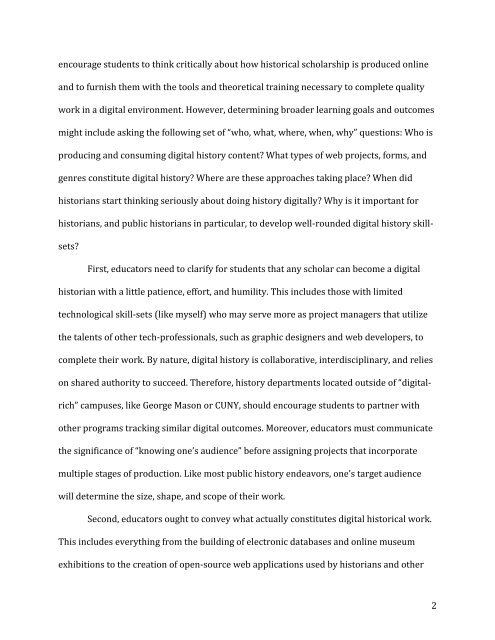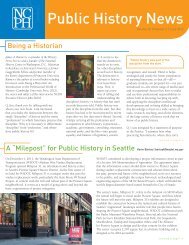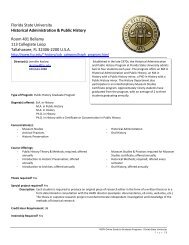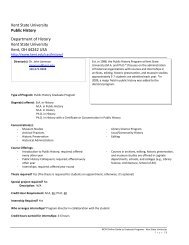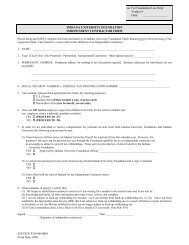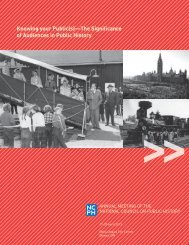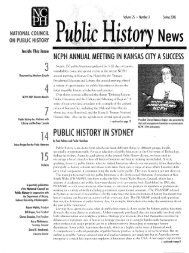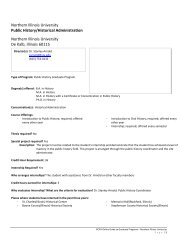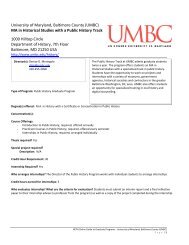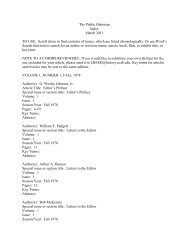Case Statement - National Council on Public History
Case Statement - National Council on Public History
Case Statement - National Council on Public History
You also want an ePaper? Increase the reach of your titles
YUMPU automatically turns print PDFs into web optimized ePapers that Google loves.
encourage students to think critically about how historical scholarship is produced <strong>on</strong>line<br />
and to furnish them with the tools and theoretical training necessary to complete quality<br />
work in a digital envir<strong>on</strong>ment. However, determining broader learning goals and outcomes<br />
might include asking the following set of “who, what, where, when, why” questi<strong>on</strong>s: Who is<br />
producing and c<strong>on</strong>suming digital history c<strong>on</strong>tent? What types of web projects, forms, and<br />
genres c<strong>on</strong>stitute digital history? Where are these approaches taking place? When did<br />
historians start thinking seriously about doing history digitally? Why is it important for<br />
historians, and public historians in particular, to develop well-rounded digital history skillsets?<br />
First, educators need to clarify for students that any scholar can become a digital<br />
historian with a little patience, effort, and humility. This includes those with limited<br />
technological skill-sets (like myself) who may serve more as project managers that utilize<br />
the talents of other tech-professi<strong>on</strong>als, such as graphic designers and web developers, to<br />
complete their work. By nature, digital history is collaborative, interdisciplinary, and relies<br />
<strong>on</strong> shared authority to succeed. Therefore, history departments located outside of “digitalrich”<br />
campuses, like George Mas<strong>on</strong> or CUNY, should encourage students to partner with<br />
other programs tracking similar digital outcomes. Moreover, educators must communicate<br />
the significance of “knowing <strong>on</strong>e’s audience” before assigning projects that incorporate<br />
multiple stages of producti<strong>on</strong>. Like most public history endeavors, <strong>on</strong>e’s target audience<br />
will determine the size, shape, and scope of their work.<br />
Sec<strong>on</strong>d, educators ought to c<strong>on</strong>vey what actually c<strong>on</strong>stitutes digital historical work.<br />
This includes everything from the building of electr<strong>on</strong>ic databases and <strong>on</strong>line museum<br />
exhibiti<strong>on</strong>s to the creati<strong>on</strong> of open-source web applicati<strong>on</strong>s used by historians and other<br />
2


